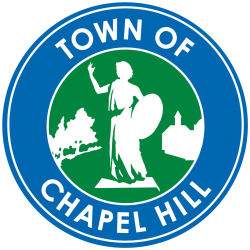In August, 2018 student activists toppled UNC’s confederate monument, Silent Sam. In our final part of our 3-part series exploring the history of the statue, we dig into the question: what comes after Silent Sam?
This episode was written and produced by Klaus Mayr, Molly Luby, and Danita Mason-Hogans. Editing by Klaus and Molly. Mixing by Ryan Chamberlain. With thanks to Aaron Keane for audio recording, technical assistance, and production coaching.
Episode Links:
- The Ku Klux Klan: or Invisible empire – Laura Martin Rose – Google Books — Who were the Ku Klux? Where did the Klan originate? What was its object and mission?
- Silent Sam: The Confederate Monument at the University of North Carolina
- Silent Sam — We created this site to help people learn about UNC’s Confederate monument. It tells a story that is vitally important at this moment in the life of our university, state, and nation. We believe that knowing the past is a necessary first step toward creating a better future.
- The Silent Sam Syllabus: A Module for Teaching Confederate Monumentality — Monument Lab — Where did all these monuments come from? What were they meant to symbolize, and how has that symbolism changed over time? Who built them, and for whom were they intended? How does one differentiate between American history and American mythology? What should be done with these monuments?
- Commemorative Landscapes of North Carolina | Confederate Monument, UNC (Chapel Hill) — Julian Carr spoke at the dedication of the monument in 1913. His speech recounted the heroic efforts of the men the monument honored as well as the women on the home front. The speech also spoke to the racialized nature of the commemoration as Carr tells this story: “100 yards from where we stand, less than 90 days perhaps after my return from Appomattox, I horse-whipped a negro wench, until her skirts hung in shreds, because upon the streets of this quiet village she had publicly insulted and maligned a Southern lady.”
- [Easy Chair] | The Monument Wars, by Rebecca Solnit | Harper’s Magazine — “Us,” of course, refers to white people. The history books insist that the North won the war, but in the South it’s hard to find the evidence. If the North had won the war, there would not be statues and street names honoring the defeated leaders. If the North had won the war, our monuments would be to the suffering of slaves and their struggle to be free. If the North had won the war, the Confederate flag would be a symbol of shameful beliefs and military defeat, seen only in museums. If the North had won the war, the war would be over.
Season one of Re/Collecting Chapel Hill was supported by grant funds from the Institute of Museum and Library Services under the provisions of the federal Library Services and Technology Act as administered by the State Library of North Carolina, a division of the Department of Natural and Cultural Resources.


